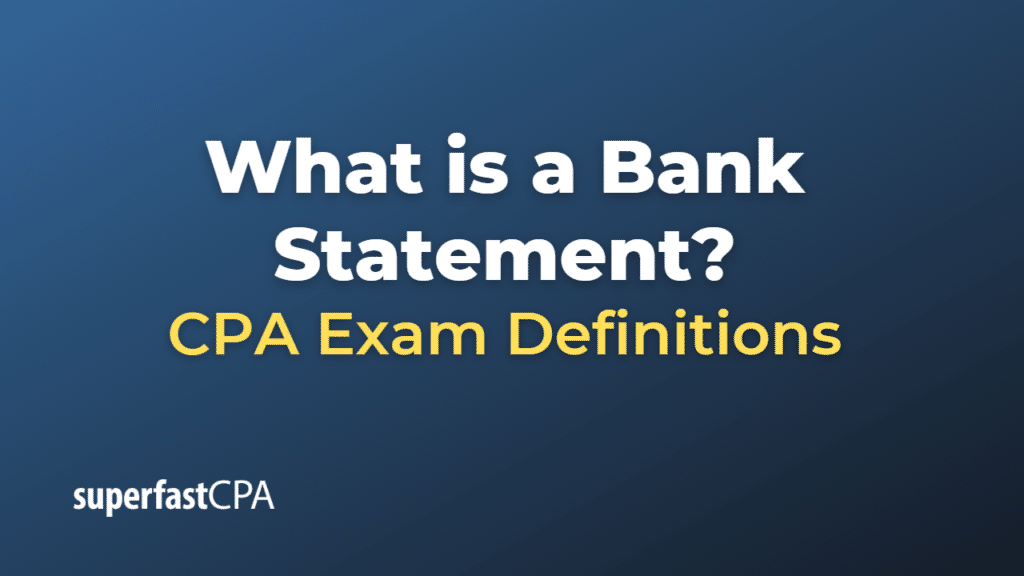Bank Statement
A bank statement is a financial document issued by a bank to its account holders, providing a summary of the account’s transactions and balances over a specific period, typically a month or a quarter. Bank statements are a crucial tool for individuals and businesses to track and monitor their financial activity and ensure the accuracy of their financial records.
A typical bank statement includes the following information:
- Account holder’s name and address: The name and address of the individual or business holding the account.
- Account number: The unique number assigned to the account by the bank.
- Statement period: The time frame covered by the statement, such as a month or a quarter.
- Beginning and ending balances: The account balance at the beginning and end of the statement period.
- Deposits and credits: A list of all deposits and credits made to the account during the statement period, including the date, description, and amount of each transaction.
- Withdrawals, debits, and checks: A list of all withdrawals, debits, and checks made from the account during the statement period, including the date, description, and amount of each transaction.
- Interest earned: The amount of interest earned on the account during the statement period, if applicable.
- Bank fees and charges: Any fees or charges incurred by the account holder during the statement period, such as monthly maintenance fees, overdraft fees, or ATM fees.
- Daily balance summary: A summary of the daily account balance for each day during the statement period, which can be helpful for monitoring cash flow and avoiding overdrafts.
Bank statements serve several important purposes, including:
- Providing a record of account activity for review and monitoring
- Enabling account holders to track income and expenses
- Assisting with budgeting and financial planning
- Facilitating the bank reconciliation process to ensure the accuracy of financial records
- Serving as documentation for tax reporting and audit purposes
Example of a Bank Statement
Let’s consider a fictional example of a bank statement for an individual, Jane Doe, for her checking account during the month of August.
Jane Doe’s Bank Statement
Checking Account
Statement Period: August 1 – August 31
Account Holder: Jane Doe
Address: 123 Main Street, Anytown, USA
Account Number: 123456789
Beginning balance (August 1): $5,000.00
Deposits and Credits:
- August 5: Paycheck Direct Deposit – $3,000.00
- August 19: Paycheck Direct Deposit – $3,000.00
- August 25: Bank Interest Earned – $2.00
Withdrawals, Debits, and Checks:
- August 3: Rent Check #101 – $1,200.00
- August 6: Grocery Store Debit – $150.00
- August 10: Online Bill Pay – Electric Bill – $75.00
- August 12: ATM Withdrawal – $200.00
- August 15: Online Bill Pay – Cable & Internet – $100.00
- August 20: Gas Station Debit – $35.00
- August 22: Online Bill Pay – Cell Phone – $80.00
- August 28: ATM Withdrawal – $250.00
Bank Fees and Charges:
- August 31: Monthly Account Maintenance Fee – $10.00
Ending balance (August 31): $6,902.00
In this example, Jane Doe’s bank statement for August provides a summary of her account activity during the month, including her beginning balance of $5,000, deposits and credits totaling $6,002, withdrawals, debits, and checks totaling $2,090, and bank fees of $10. The statement shows an ending balance of $6,902 on August 31. Jane can use this bank statement to review her account activity, monitor her spending, and ensure the accuracy of her financial records.













